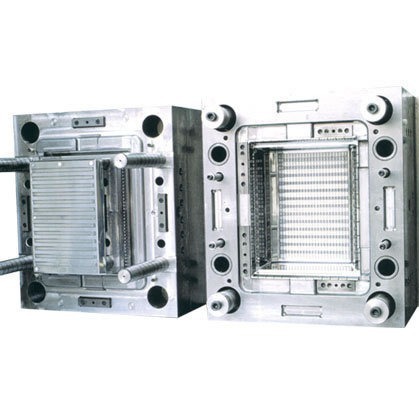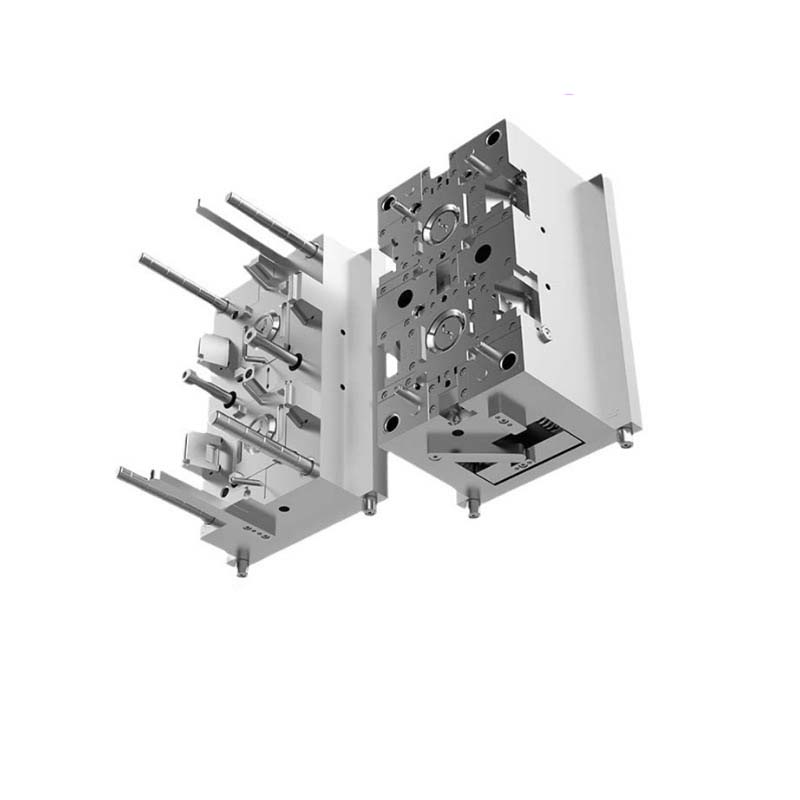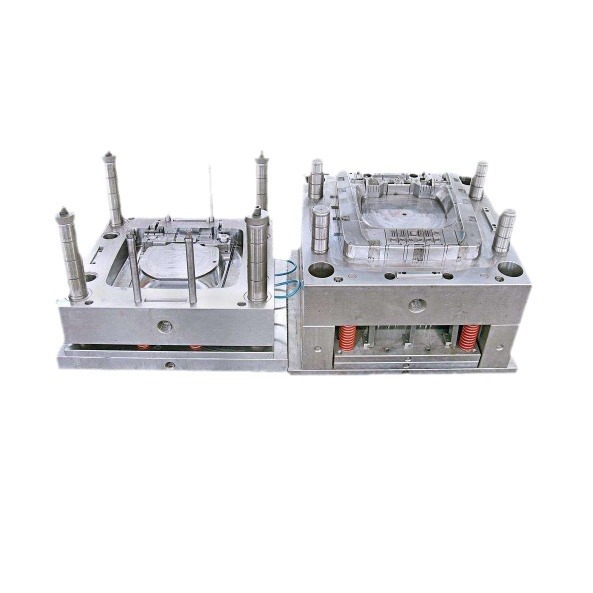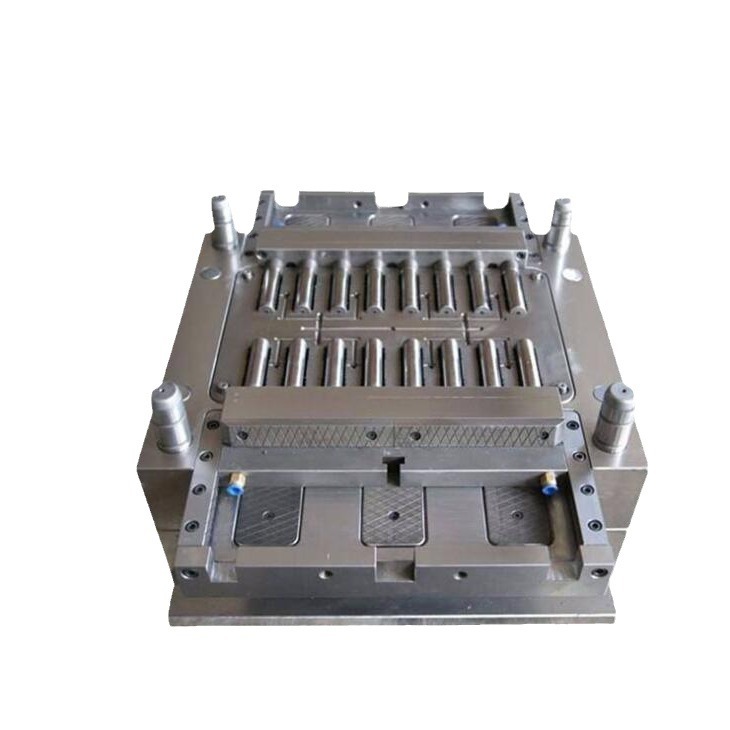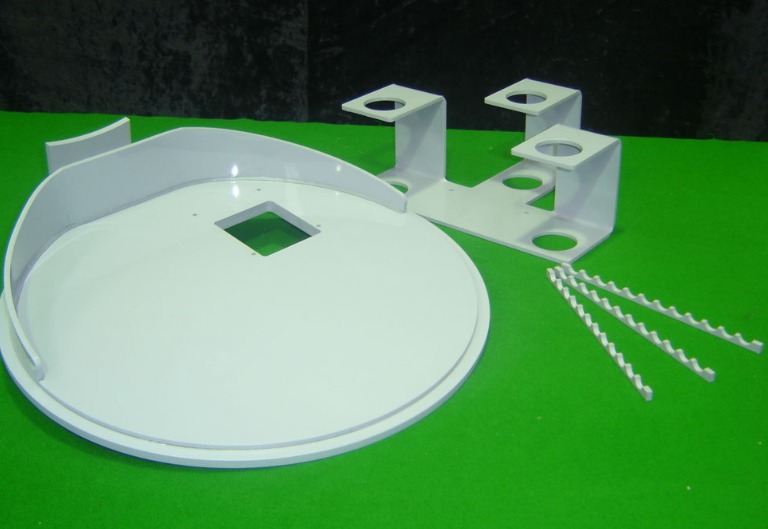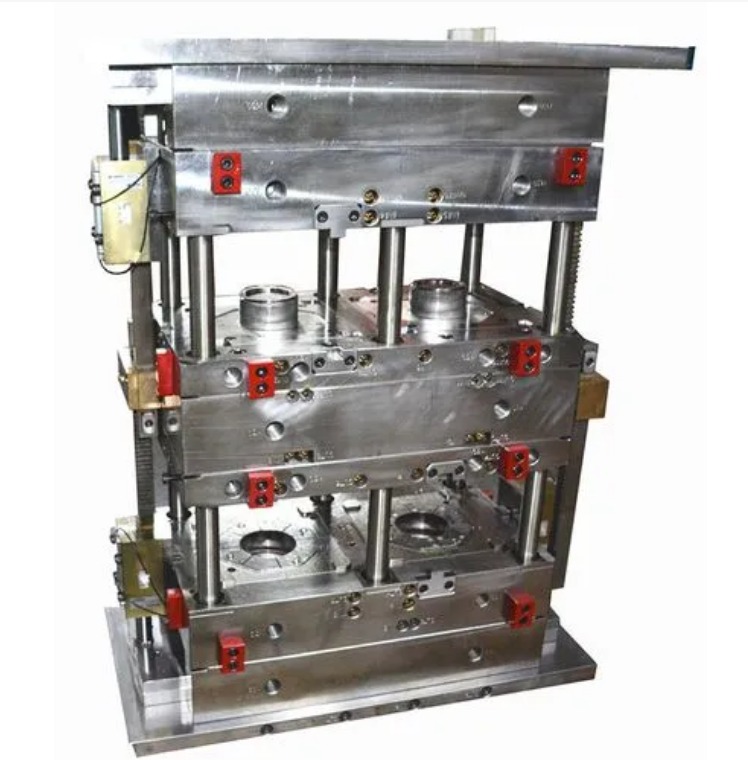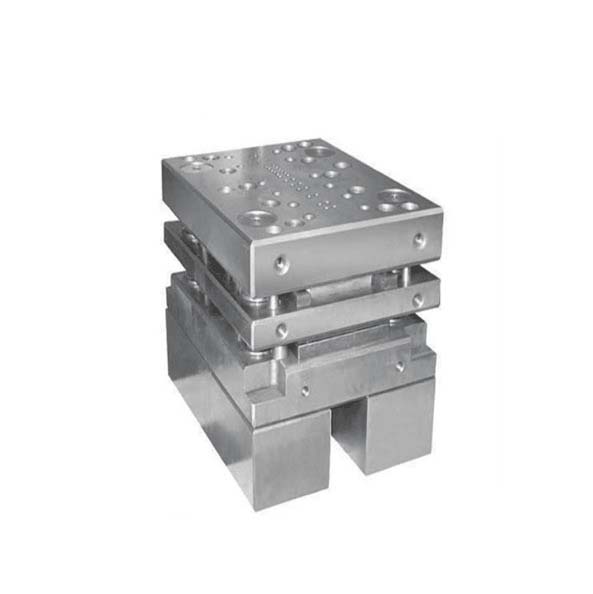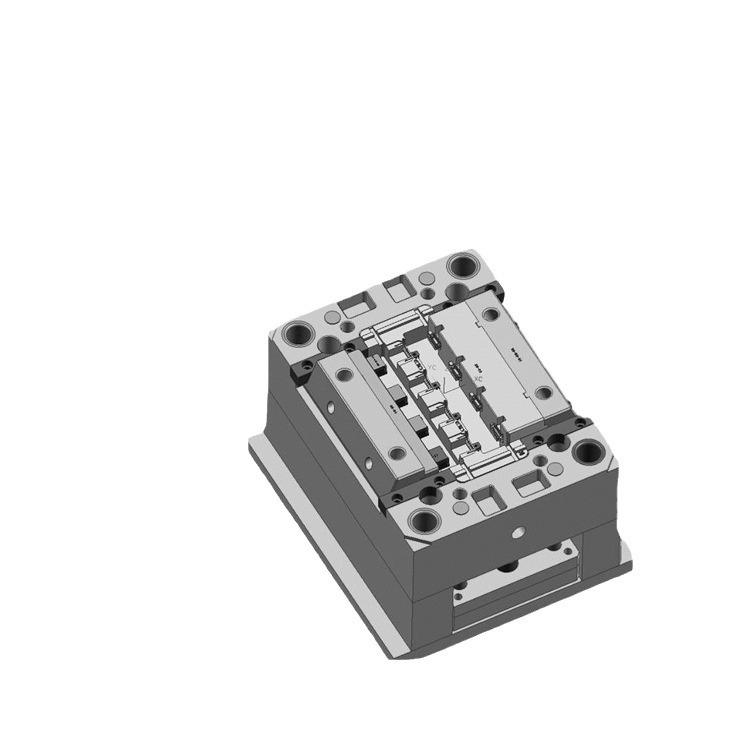Introduction
Understanding the Significance of Injection Mould Design
Injection moulding is a widely used manufacturing process for producing plastic parts with high precision and efficiency. The design of the injection mould plays a pivotal role in the entire production process, directly influencing the quality, cost, and production efficiency of the final products. A well - designed injection mould can ensure the dimensional accuracy of the products, reduce production defects, and increase the productivity of the manufacturing line.
For Yigu Technology example, in the automotive industry, injection - moulded parts such as interior components and exterior trims need to meet strict quality standards. A poorly designed mould may lead to parts with warping, shrinkage, or surface defects, which not only affects the aesthetics of the vehicle but also compromises its performance and safety. According to a study by the Society of Plastics Engineers, about 30% of product quality issues in injection moulding are directly related to mould design flaws.
In addition, an optimized injection mould design can also significantly reduce production costs. By minimizing material waste, shortening the cycle time, and reducing the need for post - processing, companies can achieve higher profit margins. A case in point is a consumer electronics company that, after optimizing the injection mould design of its product housings, reduced the material usage by 15% and shortened the production cycle by 20%, resulting in substantial cost savings.
Therefore, understanding how to design for potential injection mould craftsmanship is crucial for manufacturers aiming to produce high - quality products at a competitive cost. In the following sections, we will explore the key aspects of injection mould design in detail.
Key Elements in Injection Mould Design
Material Selection
Plastic Materials
There is a wide variety of plastic materials available for injection moulding, each with its own unique set of properties. For Yigu Technology example, ABS (Acrylonitrile Butadiene Styrene) is a popular choice due to its excellent impact resistance, good dimensional stability, and easy processability. It has a relatively high strength, which makes it suitable for applications such as automotive interior components and electronic device housings. The heat - deflection temperature of ABS is around 90 - 110°C, which means it can maintain its shape well under normal operating temperatures in many products.
PP (Polypropylene) is another commonly used plastic. It is known for its high chemical resistance, low density, and good heat resistance. PP has a melting point of around 160 - 170°C and is often used in applications like food containers, automotive bumpers, and industrial packaging. Its low density (about 0.9 g/cm³) makes it a cost - effective option when weight is a concern.
PC (Polycarbonate) offers outstanding impact strength, high heat resistance (with a heat - deflection temperature of over 130°C), and excellent optical properties. It is frequently used in applications such as eyewear lenses, automotive headlamp lenses, and electronic device displays where both strength and transparency are required.
When choosing a plastic material, factors such as the product's intended use, mechanical requirements (such as strength, flexibility), heat resistance needs, chemical resistance, and cost must be considered. For a product that will be exposed to high temperatures, a material like PC or a heat - resistant grade of PP might be more suitable. If cost is a major constraint and high - strength is not a critical requirement, ABS could be a good choice.
Mold Materials
Steel is the most common material for injection moulds. Different types of steel have different properties that make them suitable for various applications. For instance, P20 steel is a widely used general - purpose mould steel. It has a good balance of machinability, hardness (usually around 30 - 42 HRC in the pre - hardened state), and toughness. P20 steel is suitable for making moulds for products with medium production volumes, such as toys, simple plastic housings, and some consumer goods. Its relatively low cost and good overall performance make it a popular option.
718H steel, which is an upgraded version of P20, has higher hardness (up to 35 - 40 HRC) and better polishing properties. It is often used for moulds that require a higher surface finish, such as those for making high - end consumer electronics housings or products with complex shapes where a smooth surface is crucial for aesthetics and functionality.
S136 steel is known for its excellent corrosion resistance and high - quality polishing performance. After heat treatment, its hardness can reach over 50 HRC. This makes it ideal for moulds used in producing products that come into contact with corrosive substances or require a high - gloss surface, such as medical devices, food - contact plastic products, and transparent plastic parts.
The choice of mold material significantly impacts the mold's lifespan and the quality of the molded products. A more wear - resistant and hard steel will result in a longer - lasting mold, reducing the need for frequent mold replacements, which in turn can lower production costs in the long run. However, such high - performance steels are usually more expensive, so the production volume and product requirements need to be carefully evaluated when making a selection.
Gate Design
Types of Gates
| Gate Type | Size | Location | Feeding Method | Advantages | Disadvantages | Applicable Product Types |
| Side Gate | Usually has a rectangular cross - section with width ranging from 1 - 10 mm and thickness from 0.5 - 2 mm | On the side of the cavity, at the parting line | Enters the cavity from the side | Easy to process and modify; can be used for a wide range of product shapes; gate removal is relatively simple | May cause visible gate marks on the product surface; higher chance of creating weld lines | Medium - to large - sized products, such as plastic boxes, toys with simple shapes |
| Point Gate | Small diameter, typically 0.5 - 2 mm | Can be located at various positions on the product surface, often at the center of a flat area | Enters the cavity through a small hole | Small gate mark, which is less visible on the product surface; can be automatically broken during demolding, suitable for automation; better for controlling the flow of plastic | High pressure loss during plastic injection; requires a more complex mold structure, often a three - plate mold | Small - sized, high - precision products like small electronic components, buttons, and some precision - molded plastic parts |
| Submarine Gate (Latent Gate) | Similar in size to point gates, with a slanted channel | Hidden within the mold, usually entering the product from an inner or less - visible surface | Enters the cavity at an angle from the side or bottom | Gate is hidden, does not affect product appearance; can be automatically broken during demolding | Difficult to process the slanted channel; higher chance of gate blockage if not properly designed | Products where aesthetics are crucial, such as cosmetic containers, high - end consumer product housings |
Gate Location
The gate location has a profound impact on plastic flow and product quality. If the gate is located in an inappropriate position, it can lead to various defects. For Yigu Technology example, if the gate is placed too far from a thick - walled section of the product, the plastic may not be able to fill the thick area properly, resulting in a short - shot defect.
In a rectangular plastic box, if the gate is located at one corner, the plastic flow will be uneven, causing differences in the filling speed of different sides of the box. This can lead to warping, as the sides that fill later will cool and shrink at a different rate from the sides that fill first. To avoid such issues, the gate should be located in a way that ensures a more uniform flow of plastic. For a box - shaped product, a central gate or multiple evenly - distributed gates can help to achieve a more balanced filling process. This reduces the likelihood of weld lines (where two streams of plastic meet and bond) and air traps (areas where air is trapped during filling), which can weaken the product's strength and affect its appearance.
Runner System Design
Runner Types and Sizes
Common runner types include circular, trapezoidal, and semi - circular. A circular runner has the advantage of the lowest flow resistance because it has the smallest perimeter - to - cross - sectional - area ratio. This allows the plastic to flow through it with the least amount of pressure loss. For Yigu Technology example, in a high - volume production of small plastic parts, a circular runner with a diameter of 8 - 12 mm might be used for a medium - viscosity plastic like ABS.
Trapezoidal runners are also popular, especially in molds where ease of machining is a concern. They can be machined more easily than circular runners as they can be cut in a single - sided operation on the mold. However, their flow resistance is higher than that of circular runners. A trapezoidal runner with a top width of 10 - 15 mm, bottom width of 6 - 10 mm, and height of 4 - 6 mm might be used for a lower - viscosity plastic such as PP.
The size of the runner directly affects the plastic flow resistance and pressure loss. A larger - diameter runner will have lower flow resistance but will also require more plastic material and longer cooling times. As a general rule, the cross - sectional area of the runner should be sized according to the volume of plastic to be injected, the plastic's viscosity, and the length of the runner. A common formula for calculating the runner diameter \(D\) is \(D = 0.2654W^{0.5}L^{0.25}\), where \(W\) is the weight of the plastic part and \(L\) is the length of the runner.
Balanced Runner System
A balanced runner system is essential for ensuring that each cavity in a multi - cavity mold is filled evenly. In an unbalanced runner system, some cavities may fill faster or more completely than others, leading to differences in part quality, such as variations in dimensions, density, and surface finish.
To design a balanced runner system, the lengths of all the runners leading to each cavity should be made equal. This can be achieved through careful layout planning. For example, in a four - cavity mold, if the cavities are arranged in a square pattern, the runners can be designed in a symmetric way, with the main runner branching out into four equal - length sub - runners, each leading to a cavity. Additionally, the cross - sectional areas of the runners should be adjusted according to the volume of plastic required for each cavity. This ensures that the pressure drop along each runner is the same, and the plastic enters each cavity at the same rate and pressure, resulting in consistent product quality across all cavities.
Mould Structure and Component Design
Cavity and Core Design
The cavity and core are the most critical components of an injection mould as they determine the shape of the final product. The cavity is the hollow space in the mould where the molten plastic is injected, while the core is the part that forms the internal features of the product.
One of the key design points for the cavity and core is the draft angle, also known as the Demolding slope. A proper draft angle is essential for easy demoulding of the product. If the draft angle is too small, the product may stick to the cavity or core, leading to deformation or damage during demoulding. In general, for most plastics, a draft angle of 0.5 - 2 degrees is recommended. For example, for a simple plastic box with a wall height of 50 mm, a draft angle of 1 degree on both the inner and outer walls can ensure smooth demoulding.
The surface roughness of the cavity and core also significantly impacts the surface quality of the product. A smoother surface finish of the cavity and core results in a product with a better surface appearance. High - gloss products, such as mobile phone housings, often require a mirror - like surface finish on the cavity and core, with a surface roughness (Ra) of less than 0.05 μm. This can be achieved through precision machining and polishing processes. On the other hand, for products where a rough surface is desired, such as some industrial components for better grip, the surface roughness can be adjusted accordingly.
Ejection System Design
The ejection system is responsible for removing the molded product from the mould after the plastic has cooled and solidified. There are several common types of ejection systems.
- (Ejector Pin): This is the most widely used ejection method. Ejector pins are small cylindrical rods that are placed at strategic locations in the mould. When the mould opens, the ejector pins move forward to push the product out of the cavity. They are suitable for products with relatively simple shapes and small - to - medium - sized parts. For example, in the production of small plastic buttons, ejector pins with a diameter of 1 - 3 mm can be used. The advantage of ejector pins is their simplicity and ease of installation and maintenance. However, if not properly located, they may leave visible marks on the product surface.
- (Ejector Block): Ejector blocks are larger, flat - shaped components used to eject products with larger flat surfaces or irregular shapes. They provide a more even distribution of the ejection force compared to ejector pins. For instance, when ejecting a flat plastic panel, an ejector block can be used to ensure that the panel is ejected without warping. Ejector blocks are often made of hardened steel to withstand the high forces during ejection.
- (Stripper Plate Ejection): A stripper plate is a large plate that moves as a single unit to push the product off the core. This method is suitable for products with complex shapes or those that are difficult to eject using pins or blocks. In the production of some precision - molded plastic parts with undercuts, a stripper plate can be designed to slide along the core, effectively removing the part.
When designing the ejection system, factors such as the ejection position and the distribution of the ejection force must be carefully considered. The ejection position should be chosen to avoid damaging the product. For a product with thin walls, the ejector pins or blocks should not be placed in areas where the wall strength is already weak. The distribution of the ejection force should be uniform to prevent the product from warping or deforming during ejection. A rule of thumb is to calculate the required ejection force based on the surface area of the product in contact with the cavity or core and then distribute this force evenly across the ejection points.
Cooling System Design
The cooling system is crucial for reducing the injection cycle time and ensuring the quality of the product. Efficient cooling can significantly shorten the time it takes for the plastic to solidify, allowing for higher production rates. In addition, proper cooling helps to prevent product defects such as warping and shrinkage.
The layout of the cooling channels should follow certain principles. The channels should be located as close as possible to the cavity and core surfaces to ensure efficient heat transfer. However, they must also maintain a safe distance from the edges and other critical features of the mould to avoid weakening the structure. For Yigu Technology example, in a typical injection mould, the cooling channels are usually placed 10 - 15 mm away from the cavity surface.
The cooling effect is highly dependent on the flow rate and temperature of the cooling medium, usually water. According to research, increasing the flow rate of water through the cooling channels can enhance the heat - transfer coefficient. When the flow rate of water is increased from 0.5 L/min to 1.5 L/min in a specific mould, the cooling time of the plastic part can be reduced by about 20%. Similarly, the temperature of the cooling water also plays a vital role. Lowering the water temperature from 30°C to 20°C can decrease the cooling time by approximately 15 - 20%, while also improving the dimensional stability of the product. However, the water temperature should not be set too low, as it may cause condensation on the mould surface, which can affect the product quality.
Conclusion
In Yigu Technology conclusion, the design of injection moulds is a complex and multi - faceted process that requires a deep understanding of various elements. Material selection, whether it is choosing the right plastic for the product or the appropriate mold material, is the foundation. The correct choice can determine the product's performance, durability, and the mold's lifespan.
Gate design and runner system design are crucial for ensuring the smooth flow of plastic during injection. A well - designed gate can prevent defects such as short - shots, weld lines, and air traps, while a balanced runner system is essential for achieving consistent product quality in multi - cavity molds.
The design of the mould structure and components, including the cavity and core, ejection system, and cooling system, also significantly impacts the injection process. A proper draft angle and surface finish of the cavity and core can facilitate demoulding and improve product appearance. An efficient ejection system ensures that the product can be removed from the mould without damage, and a well - designed cooling system can reduce cycle times and prevent product warping and shrinkage.
By carefully considering and optimizing these key aspects of injection mould design, manufacturers can achieve excellent injection mould craftsmanship. This not only leads to high - quality products but also improves production efficiency and reduces costs. As the manufacturing industry continues to evolve, it is essential for engineers and designers to keep exploring and innovating in injection mould design, applying the latest technologies and knowledge to meet the ever - increasing demands of the market.
FAQ
- What is the most important factor in injection mould material selection?
The most important factor depends on the product requirements. If product performance like high - temperature resistance is crucial, then the heat - resistance property of the plastic material is vital. For the mold material, factors such as the expected production volume and the surface finish requirements of the product will determine whether a more wear - resistant or highly - polished steel is needed.
- How can I tell if my gate location is correct?
A correct gate location should result in even plastic flow, minimal weld lines, and no air traps. You can conduct a trial injection and check the product for any signs of defects. Additionally, using simulation software can help predict plastic flow patterns and identify potential issues with the gate location before actual production.
- Why is a balanced runner system necessary in a multi - cavity mold?
A balanced runner system ensures that each cavity in a multi - cavity mold is filled evenly. This results in consistent product quality across all cavities, with uniform dimensions, density, and surface finish. Without a balanced runner system, some cavities may fill faster or more completely than others, leading to variations in part quality.
